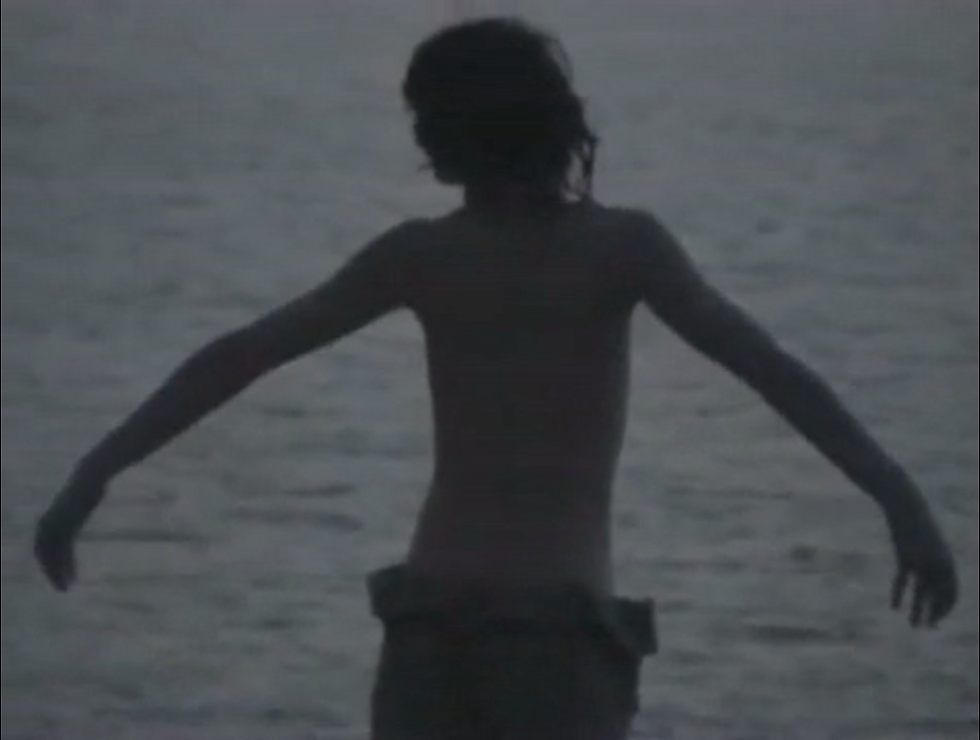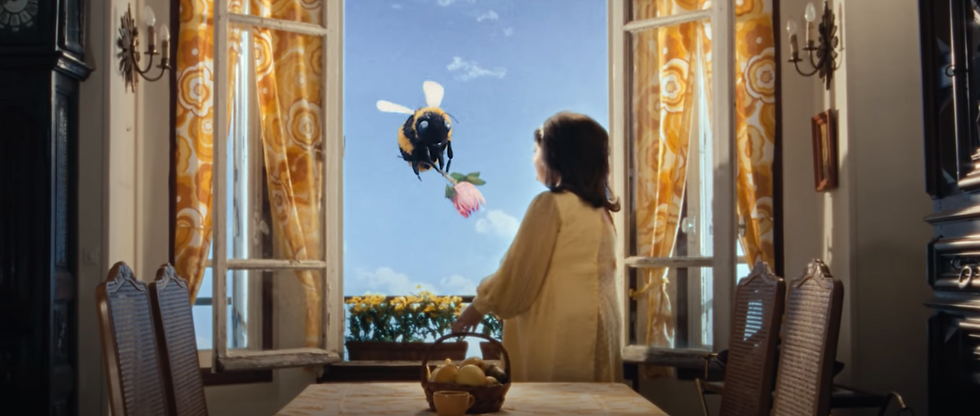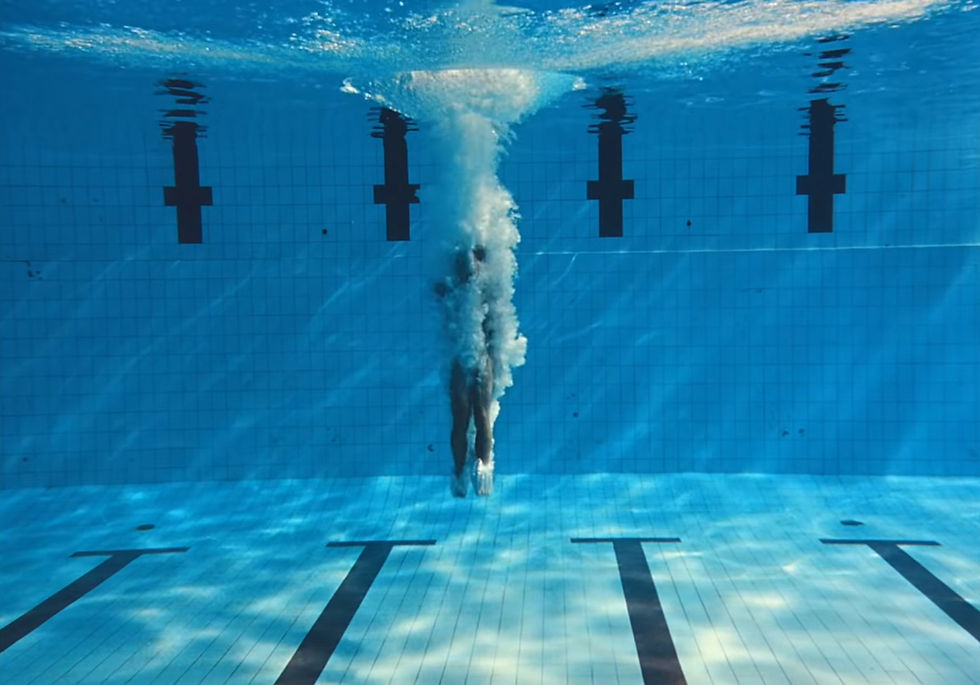WIND IN THE WIRES
- Taylor Joe Berger

- May 3, 2022
- 6 min read

(Illustration, "Patrick Wolf" by AtelierTRI, 2022)
INTRODUCTION
Patrick Wolf is a virtuoso, multiinstrumentalist, composer, poet and fiercely independent artist who has been releasing his own music since 2003.
He has been a hero of mine for over a decade now. I remember very vividly being completely in awe of him as he stood on stage in front of me and my friends (including Stephanie Zundel who runs this blog with me), once in Bern and on another occasion in Basel. Both times leaving me endlessly inspired and amazed at how generous he was as a musician and performer never shying away from fully indulging in the moment, sharing his vulnerability and giving us as an audience a lot more than just a live rendition of his music.
These are very fond memories of mine. One of his songs, Wind In The Wires, holds a special place in my heart. Whenever I listen to it I find myself picturing one very specific image from the music video. This re-emergence of the image is what I want to further explore here.
WIND IN THE WIRES
The video for Wind In The Wires begins silent with a shot of Wolf from behind, effortlessly leaping around near the edge of a cliff in flowy clothing. The shapes created by the fabric emphasise his playful movement. Wolf gets a hold of some of the fabric and stretches it further for it to be caught by the wind.
Suddenly indoors we see him seated in front of an unremarkable wall, still with his back to us. The song starts simultaneously with this image. He slowly turns his head. With his gaze suddenly moving in our direction a flash of light floods the scene. The song begins to build, the flashing light becomes more frequent. Wolf holds different poses, while switching black outfits, be it a vest, or scarf, suggesting a photoshoot is taking place. Otherwise showing a lot of bare skin.
The video keeps on progressing through the edit and through the previously mentioned elements, broken up by close-ups revealing tears rolling down Wolf’s face.

(Still, "Wind In The Wires" by Patrick Wolf, 2005)
Precisely in the middle of the video a clip shows him back outside, a strong silhouette, him slowly lifting his arms, presumably on the cliff or at a beach, the sea as a backdrop to his movements. As the song keeps building the images become more abstract, blurry, Wolf twisting his body into different strange shapes.
For a short moment, we see a clip of Wolf with what appears to be a bird cage attached to his wrist with a black silk band, but the clip only hints to this, we never see the full image.
“Like a bird in an aviary,
Singing to the sky,
Singing to be free”
As these lyrics pass the pressure and density in the song lift, they are replaced by more spacious sounds, and a looser composition for the outro. We see Wolf standing outside in the same flowy outfit as noted in the very first shot, now accompanied by flocks of birds (presumably seagulls). The static seems to have dispersed, the storm has passed, leaving behind a quiet calm space.
The final shot is once again inside, Patrick Wolf now standing upright and facing the camera directly.
FRAME
The image I personally always think of when hearing the song, whether it be the original version or the later released Sundark And Riverlight (2012) version, is the second scene of the music video, as the song sets in. Patrick Wolf sitting in front of a wall, back turned towards the camera, him looking down to the right bottom corner of the frame. This portrait appears in my mind whenever I hear the song. It is highly contrasted, the shadows almost swallowing the contours of Wolf’s left shoulder and his back, his hair also a dark black surface.
But what exactly is it that I am remembering? How come this image has somehow chained itself to the song so tightly that I am reminded of it with each listen?

(Still, "Wind In The Wires" by Patrick Wolf, 2005)
MEMORY
In a video essay by Johannes Binotto titled "Practices of Viewing: Screenshot", screenshots and stills from video or film are discussed to be much more than just the image captured. They can not only be a summary of a scene or clip, a ‘bookmark’ for the film or video at hand, but they also reveal the focus, interest and perhaps even memory of the person who took them. This can be interesting in this context, since I too have to some degree created a mental screenshot, bookmark, representing the video. And just like the mentioned screenshot, my memory differs from the original media and material.
So, although the image I think of as somewhat intrusive to the experience of listening to the song was indeed originally forged and produced by someone else, I have ever since, to a degree, chosen to reproduce the same image over and over again in my head. Not unlike the process of a film being produced, released, viewed and later screenshots made of the viewer’s highlights, exposing their own interests and pinnacles of the film. Therefore stepping into a more active role than before as a mere observer.
According to media scholar Matthias Wittman every memory which is produced is also always by default commenting on the absence of what is trying to be remembered. Making memory therefore dependent on time, or rather time which has passed. He continues by exploring methods of remembrance, be that through a kind of 'Doppelgänger' – image we reproduce, as it might be the case here, or with what Sigmund Freud called 'Deckerinnerungen' fittingly called 'screen memories' in English, which are very likely fabricated memories that are meant to protect the subject from the traumatic experience, while also insisting on being remembered by the traumatised.
By remembering the image when listening to the song, I am constructing an image, which is a reminder for the absence of the video in that moment. Therefore, as clear as this image in my head seems, it is always false, and will always vary, maybe even just slightly each time I engage with the song in this capacity.
INTERVIEW
The song and album were written in Cornwall, heavily influenced by the dramatic scenery and fierce ever-changing weather. Wolf also said in a Pitchfork interview from February 2005:
"I think something that hasn't been covered in a lot of the interviews with this record is that the title track to Wind In the Wires is a love song to electricity. There's not so much electronics on the album, but there's a lot of electricity-- buzzing noises, low frequency noises, and stuff. Radio static, kind of analog noises.
The song is a realization that electricity is just another element. A lot of people have asked me 'Why aren't you doing so much electronic stuff?' To me, there's never been a difference between electronic and acoustic. I've always had this idea that electricity is another element like wind or fire or water. There's lightning, for god's sake! An electronic instrument is just harbouring a natural element the same way that a guitar is harbouring an acoustic element. It's all nature, really."
If we take this realization by Wolf (beautifully captured by the title and lyrics of the song, mentioning both the natural- and synthetic/ human -power) even further, we are left with the electricity in our own bodies. Be it through movement, heartbeat or thought. Travelling electricity, pulses, static enabling our thoughts and momentarily painting brief memories for us to consume. Memories to be enjoyed not in the sense of finding an old book in a library which stores our passed stories that can be safely tucked away in the same spot again, but more like images produced in sand just to be carried away by the wind shortly after viewing, and reproducing those images from the same template over and over again resulting in moderate or even dramatic differences from the previous versions. Pretty much like the images we released alongside this essay. Each drawing depicts the same subject matter, even in similar colour, but varying in technique and shape.
Conclusion
The music video for Wind In The Wires in itself can be read as a cluster or culmination of memory. For me as a listener, for Patrick Wolf who wrote the song during a thunderstorm as he was in a little cottage in Cornwall, the music reminding him of that day, the video somewhat reconstructing the image of someone being indoors during a storm, through flashes of light flooding the room and abruptly vanishing. Similarly, to how memory is reconstructed. The falsehood or synthetic aspect, even artificiality of the photoshoot can be read as more proof to how we create and reimagine what we think we are reliving through our memory.
Thank you Patrick Wolf for the many beautiful memories, either with or accompanied by you! TRCKMG loves you!






Comments